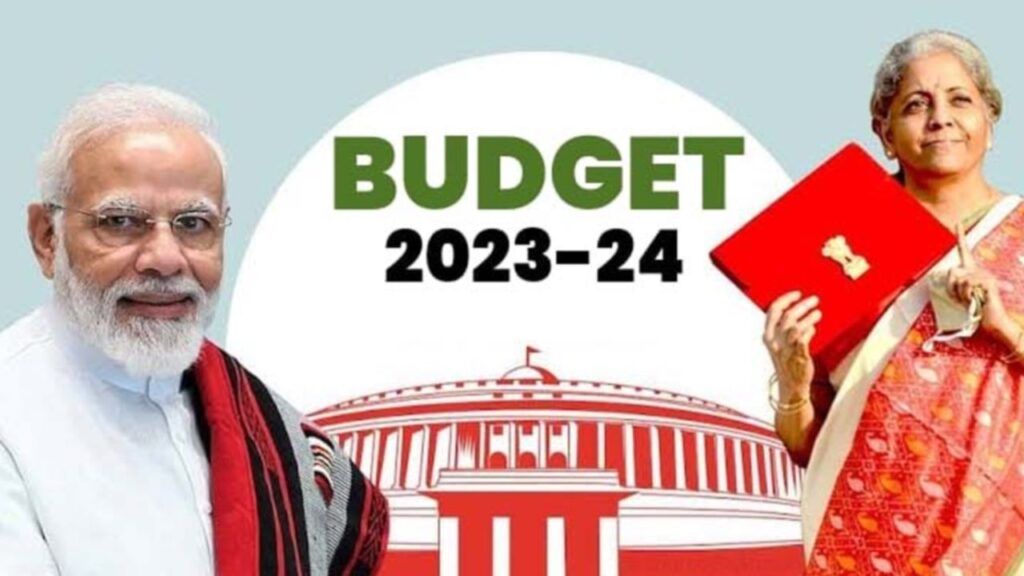Union Budget 2023 - Simplified

The Indian government has recently made an announcement regarding the country’s economy through Union budget 2023. The government is committed to ensuring the sustainable growth of the economy and creating favorable conditions for businesses and industries.
To achieve this goal, the government has been implementing various reforms and policies aimed at boosting the ease of doing business and attracting foreign investment. The recent announcement builds upon these efforts and outlines the steps being taken to further stimulate economic growth. Here are a few important highlights of Union Budget 2023
- Per capita income is a measure of a country’s average income per person. In India, the per capita income has more than doubled from ₹89,000 to ₹1.97 lakh in around nine years, which is a significant achievement. This increase in income is a result of sustained economic growth and the implementation of pro-growth policies by the government. The rise in per capita income indicates an improvement in the standard of living for the citizens of the country and is a testament to the government’s efforts to promote inclusive growth.
- In the past nine years, the size of the Indian economy has increased significantly, rising from the 10th largest to the 5th largest in the world. This growth is a result of various reforms and initiatives aimed at boosting the ease of doing business and attracting foreign investment. The increase in the size of the economy has created employment opportunities, boosted incomes, and contributed to the well-being of the people.
- The Employees’ Provident Fund Organization (EPFO) is a government-run organization that provides social security benefits to the country’s workers. In the past nine years, the membership of the EPFO has more than doubled to 27 crore, indicating an increase in the number of workers who are covered by social security benefits. The growth in EPFO membership is a result of the government’s efforts to promote employment and improve the livelihoods of workers.
- Digital payments have become increasingly popular in India in recent years, with 7,400 crore digital payments of ₹126 lakh crore taking place through the Unified Payments Interface (UPI) in 2022. The growth in digital payments is a result of the government’s efforts to promote financial inclusion and reduce the dependence on cash. The increase in digital payments has made financial transactions more convenient and efficient for citizens, contributing to the growth of the economy.
- Under the Swachh Bharat Mission, 11.7 crore household toilets have been constructed, which has improved the sanitation and hygiene conditions of the country’s citizens. The initiative has also contributed to the improvement of public health and the reduction of disease transmission.
- The Ujjwala scheme was launched to provide LPG connections to households in India. Under this scheme, 9.6 crore LPG connections have been provided, which has improved the access to clean cooking fuel for the country’s citizens. This has had a positive impact on the health and well-being of citizens, particularly women and children, who are often exposed to indoor air pollution from traditional cooking fuels.
- In response to the Covid-19 pandemic, the government launched a massive vaccination drive in the country, with 220 crore vaccinations of 102 crore persons taking place. This effort has helped to slow the spread of the virus and protect the health of the country’s citizens.
- PM Jan Dhan Yojana was launched to provide financial inclusion to citizens who do not have access to formal banking services. Under this scheme, 47.8 crore PM Jan Dhan bank accounts have been opened, which has improved access to financial services for citizens who were previously excluded from the formal financial sector.
- Under the PM Suraksha Bima and PM Jeevan Jyoti Yojana, insurance cover has been provided to 44.6 crore persons. The initiatives have improved the access to insurance services for citizens who previously did not have access to such services, providing them with financial protection in case of accidents or death.
- Under the PM Kisan Samman Nidhi, a cash transfer of ₹2.2 lakh crore has been made to over 11.4 crore farmers. The initiative has provided financial support to farmers, helping to improve their livelihoods and increase agricultural production.
- “Saptarishi,” which include inclusive development, reaching the last mile, infrastructure and investment, unleashing the potential, green growth, youth power, and financial sector. These priorities are aimed at creating a more inclusive, sustainable, and equitable society by providing access to basic services, promoting infrastructure development, creating employment opportunities, and supporting the country’s financial sector. The government has committed to implementing policies and initiatives that support these priorities, which will have a positive impact on the country’s economic growth and the well-being of its citizens.
- The Indian government is taking several measures to simplify the tax regime and reduce the compliance burden on citizens. The Direct Tax proposals aim to maintain continuity and stability in taxation while promoting the entrepreneurial spirit and providing tax relief to citizens. The Income Tax Department is continuously working to improve Tax Payers Services by making compliance easy and smooth. One of the key initiatives taken in this direction is the proposal to roll out a next-generation Common IT Return Form for taxpayers’ convenience. The government is also planning to strengthen the grievance redressal mechanism to ensure that taxpayers’ issues are resolved effectively.
- Another important measure aimed at providing tax relief to citizens is the increase in the rebate limit of Personal Income Tax from the current Rs. 5 lakh to Rs. 7 lakh in the new tax regime. This means that persons in the new tax regime, with income up to Rs. 7 lakh, will not have to pay any tax. The tax structure in the new personal income tax regime, introduced in 2020 with six income slabs, is set to change with the number of slabs being reduced to five and the tax exemption limit being increased to Rs. 3 lakh. This change will provide major relief to all taxpayers in the new regime.
- The new tax rates are structured as follows: For total income up to Rs. 3,00,000, the rate is Nil; for income between Rs. 3,00,001 and Rs. 6,00,000, the rate is 5%; for income between Rs. 6,00,001 and Rs. 9,00,000, the rate is 10%; for income between Rs. 9,00,001 and Rs. 12,00,000, the rate is 15%; for income between Rs. 12,00,001 and Rs. 15,00,000, the rate is 20%, and for income above Rs. 15,00,000, the rate is 30%. These changes in the tax regime aim to provide major relief to all taxpayers while maintaining the stability and continuity of the tax system.
In conclusion, the Indian government, through Union Budget 2023, is making significant efforts to simplify the tax regime and reduce the compliance burden on citizens. Through its Direct Tax proposals, the government aims to maintain stability and continuity in taxation, promote the entrepreneurial spirit and provide tax relief to citizens. The Income Tax Department is also working to improve Tax Payers Services by introducing a next-generation Common IT Return Form and strengthening the grievance redressal mechanism. The rebate limit of Personal Income Tax has been increased and the tax structure has been simplified with the reduction of slabs and increase in the exemption limit. These changes in the tax regime are aimed at providing relief to taxpayers while maintaining the stability and continuity of the tax system.
Do you want access to more such articles? Register yourself thorugh this link
Visit our YouTube Channel to get access to a lot of free videos!



